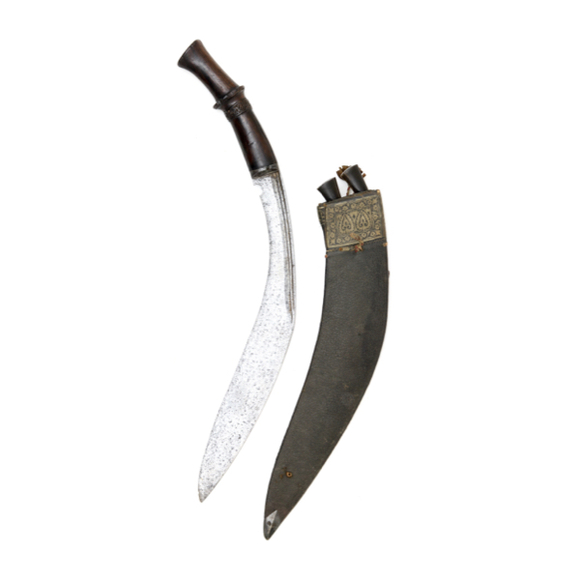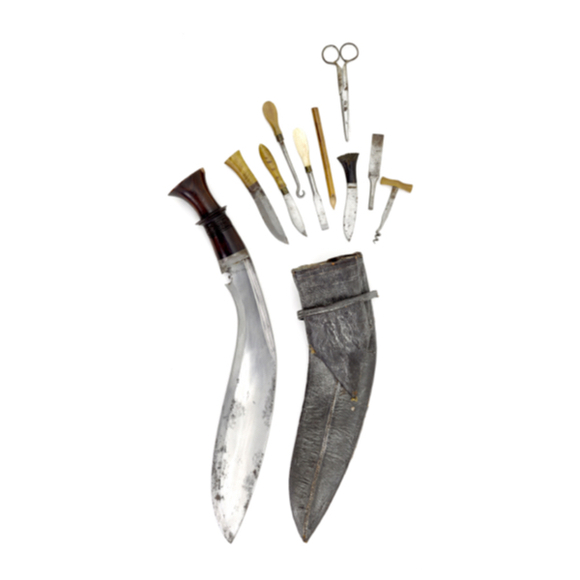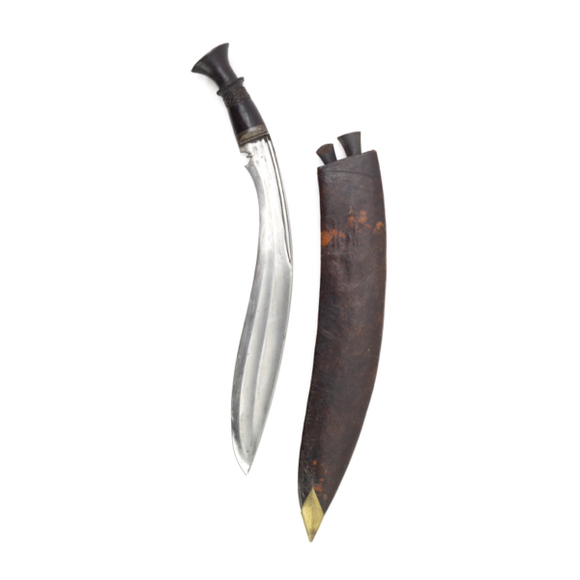Russet iron, one-piece construction with decorative grooves.

86.5 cm / 34 inch
74 cm / 29.1 inch
forte 5 mm
middle 3 mm
near tip 1 mm
forte 25 mm
middle 17 mm
near tip 13 mm
545 grams
10 cm from center of crossguard.
Malabar coast, India.
Iron, steel, silver, brass.
18th century.
A very rare example of an Indian sword of the Malabar coast, called kayamkulam vaal. Kayamkulam refers to the medieval Kingdom established in the 11th century and incorporated into Travancore in 1746, after which it became a princely state. Vaal is the local word for double edged sword. It were the armies of Travancore, mostly consisting of Nair, that defeated the Dutch at the Battle of Colachel in 1741, successfully ending Dutch authority over the Malabar coast.
The sword has a long, slender double edged blade. Its springy temper may be indicative of European manufacture, imported European blades often feature on south Indian arms. It bears a mark that vaguely resembles the number 48.
The iron handle of characteristic form with flanged disc pommel. Other typical features of these hilts are the conical protrusions at the crossguard and the cusped ends of the langets. The forged iron hilt is decorated with attractive geometric designs in silver lines and dots, most of which remains intact.
Comparable examples
Very few examples survived or have been published. The most famous is probably the sword of Velu Thampi (1765–1809) who was prime minister of Travancore between 1802 and 1809 and who rebelled against the British East India Company. Another is in The National Museum, Edinburgh, Scotland. It is illustrated on the back of the dust jacket of Hindu Arms & Ritual by Robert Elgood. Another example is still held in the old Kayamkulam royal Palace in Krishnapuram.1
Conclusion
A seldom found Kayamkulam sword from the Malabar coast. They are rare enough as a type, this one has a beautiful iron hilt with most of the silver decoration still intact.
NOTES
1. See a photograph of the sword on Wikimedia Commons
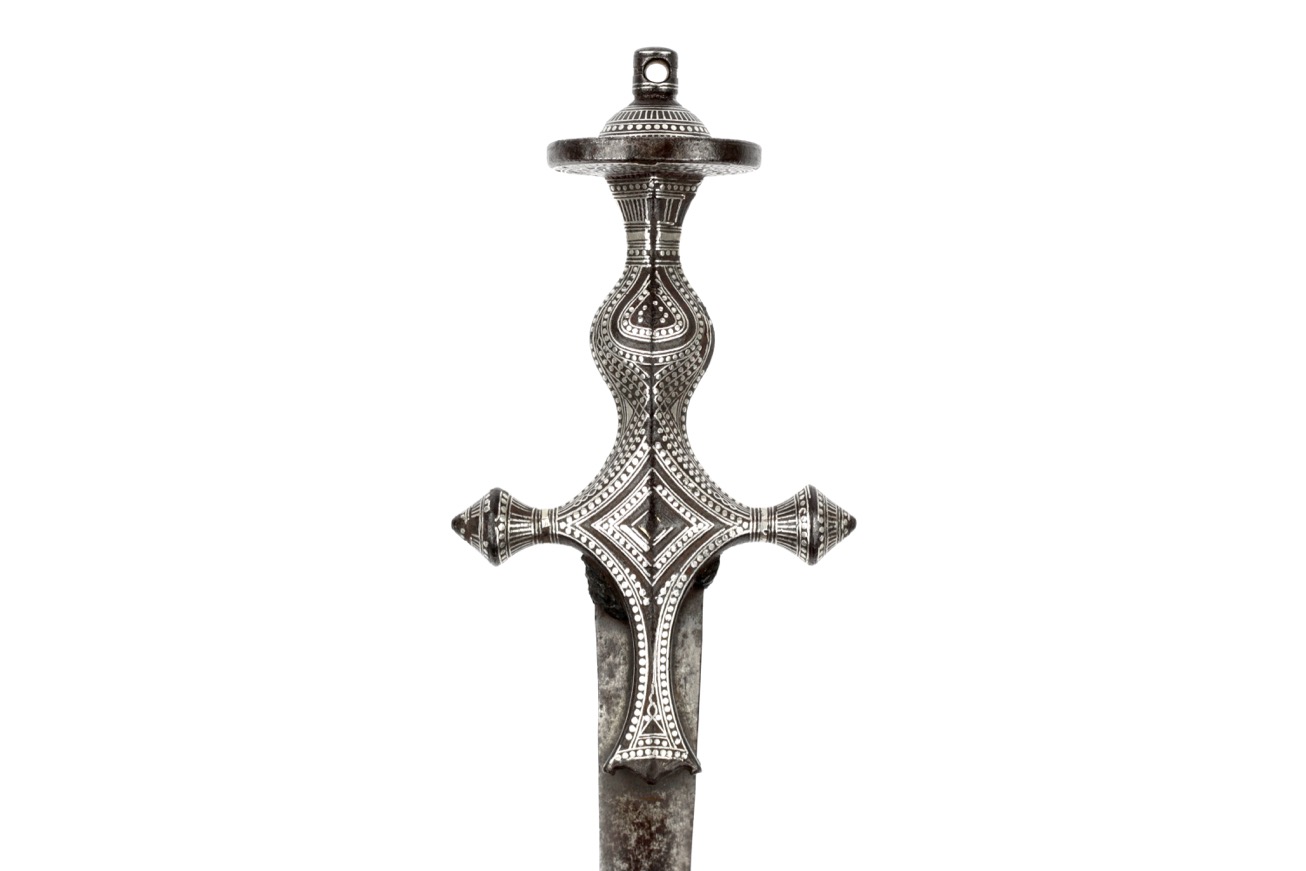
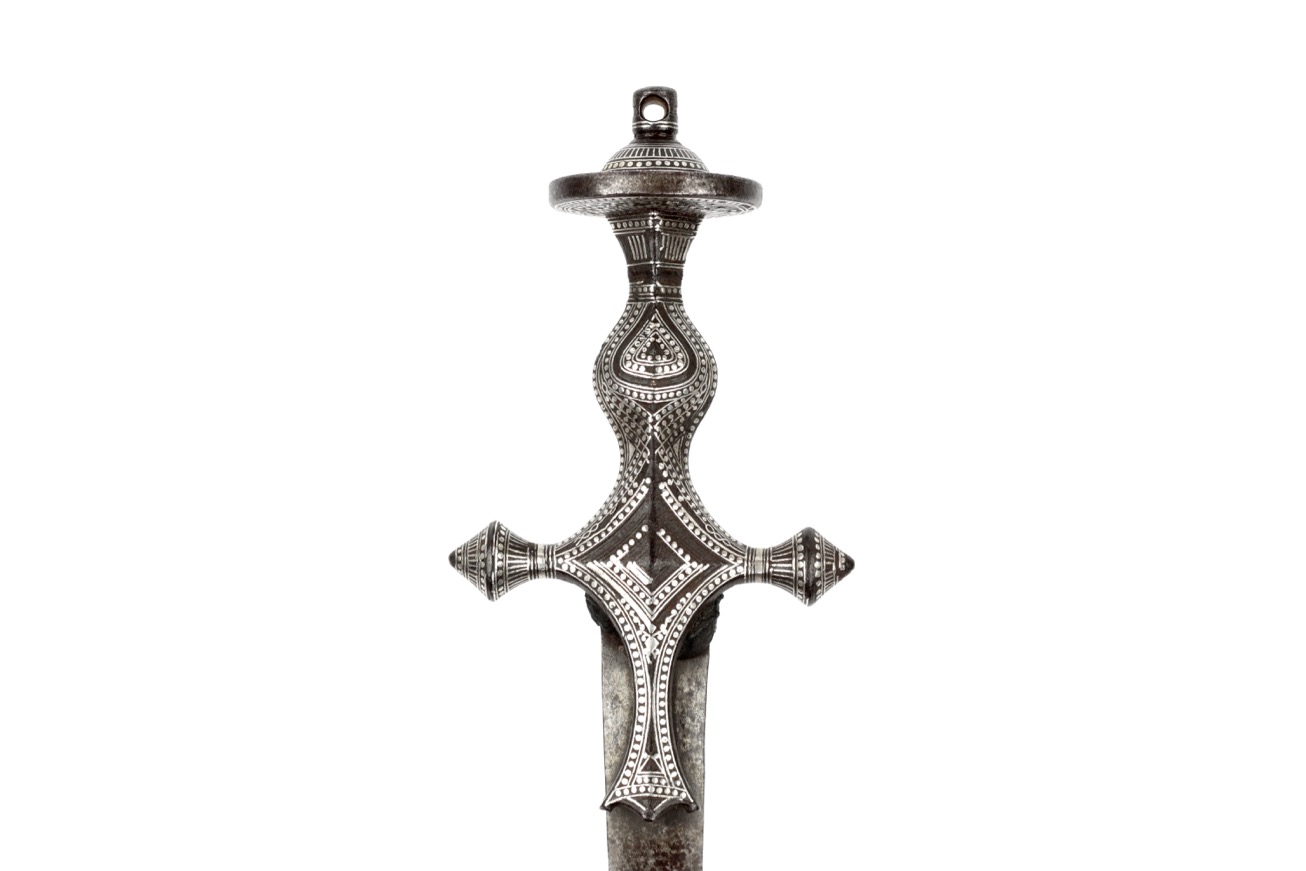
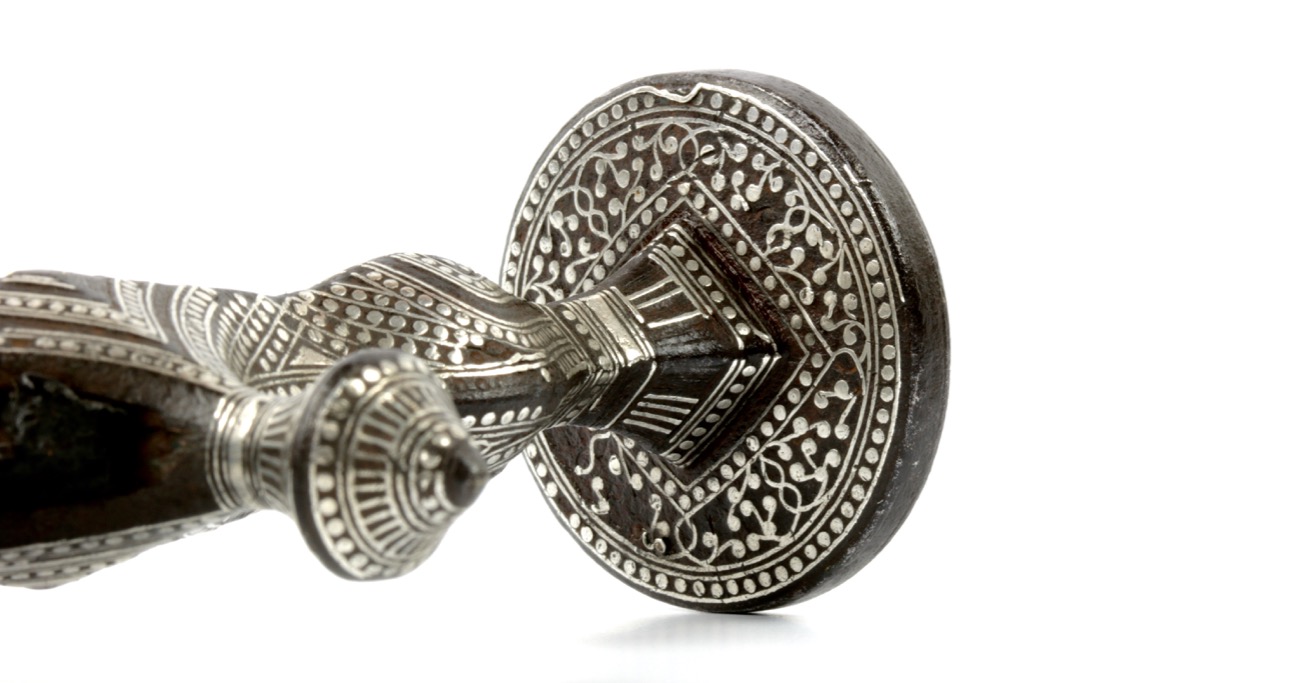
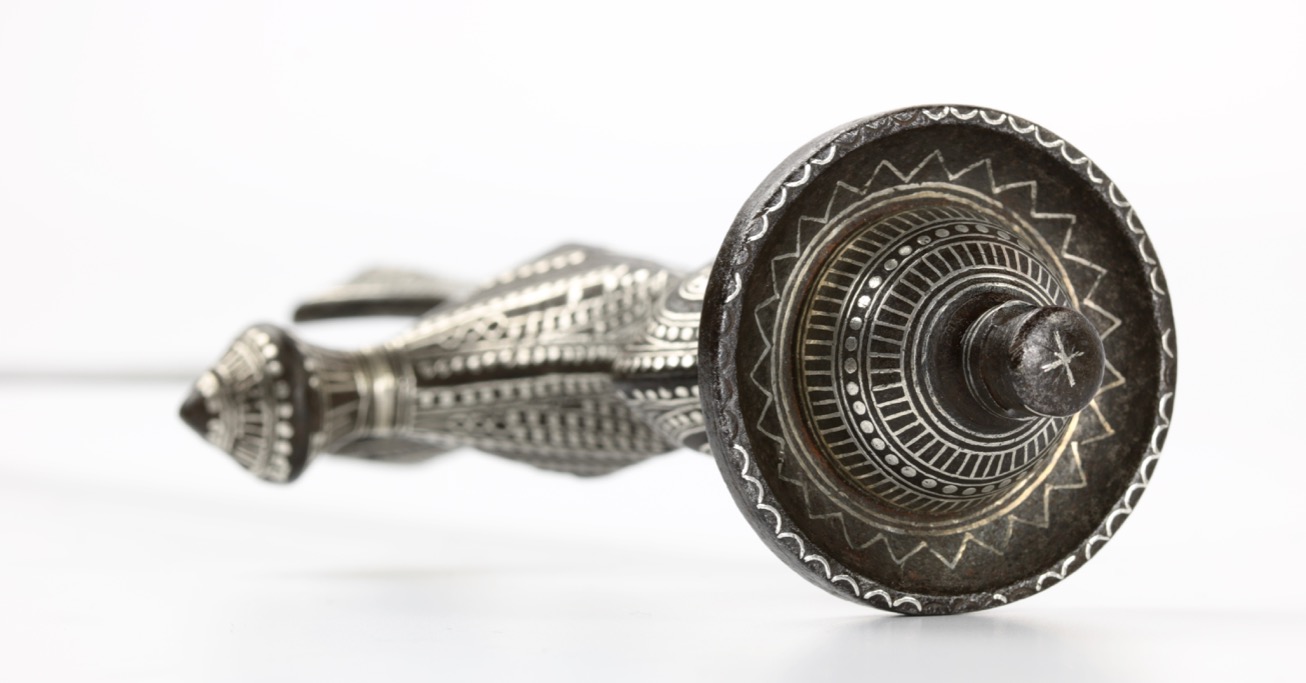



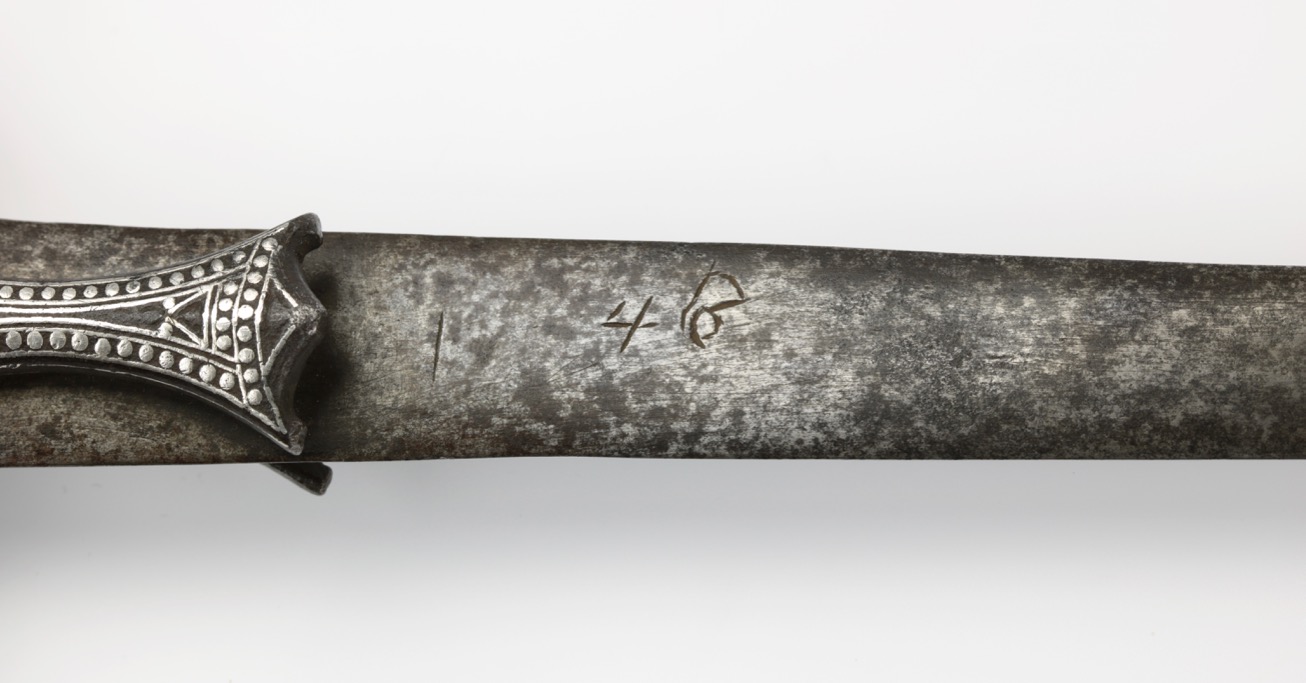

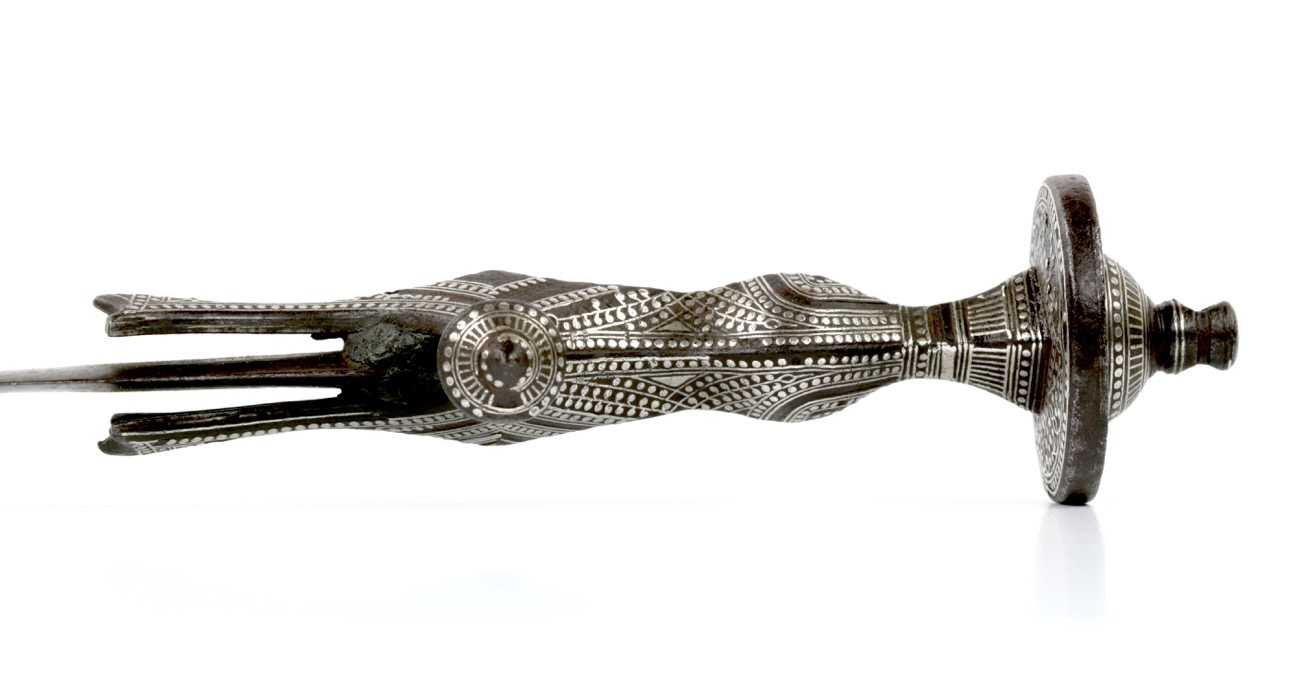

With a very fine Nepalese blade, but kard-like hilt and scabbard.
Early type with very shallow notch in the blade and little flare in the pommel.
20th century military khukurī with many different tools in its back pocket.




